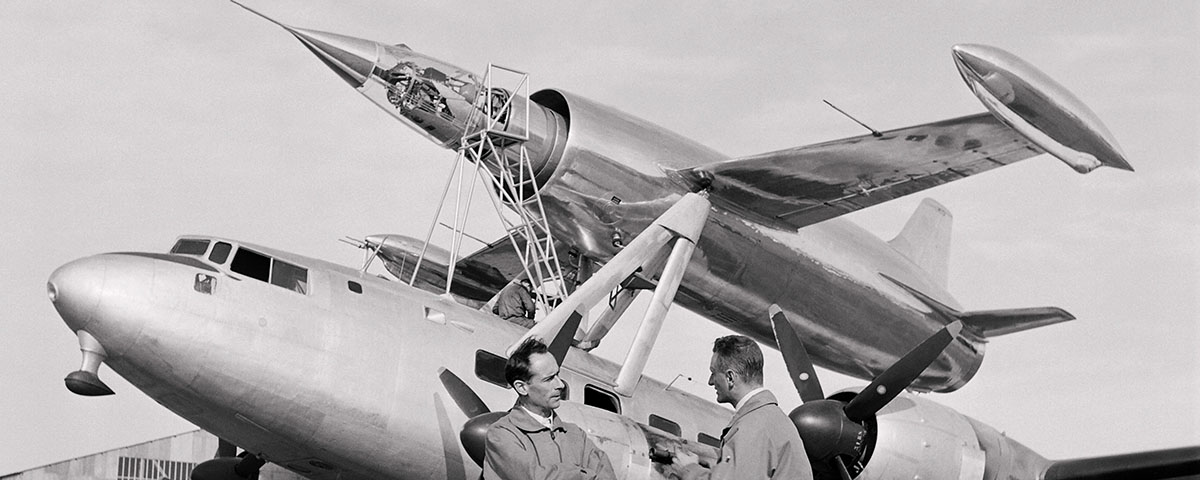Leduc 0.10-01
The first manned aircraft powered by a ramjet, the French Leduc 0.10 was conceived in 1938 by René Leduc and developed in secret at Breguet Aviation, even during the German occupation of World War II. It featured a double-walled fuselage with the pilot in the inner core section and the gap in between providing an inlet to the Leduc ramjet, which generated 3,520 pounds of thrust.
Leduc was confident his airplane would exceed the speed of sound, but it had one problem: ramjets cannot be started while stationary. Therefore the prototypes had to be developed as parasites, dependent on larger aircraft to get them airborne and underway for the ramjet to start, at which point they could be released. Their initial mother ships were two experimental four-engine, high-altitude testbeds developed in occupied France by the Germans as the Heinkel He-274 V1 and V2, which were completed postwar by Ateliers Aéronautiques de Suresnes as the AAS 01A and 01B, respectively. After ground and glider testing, the Leduc 0.10 made its first powered flight from the AAS 01A on April 21, 1949, attaining a maximum speed of 420 mph.
Subsequent testing employed a French four-engine airliner, the Sud-Est SC.161 Languedoc 31, modified with a cradle for the ramjet (as shown in the photograph). It reached a maximum speed of 500 mph (Mach .85) and an altitude of 36,000 feet before the first prototype was destroyed in a crash in 1951 and the other severely damaged in another crash the following year. Though injured, both test pilots survived. By that time the turbojet had proven more practical, although Leduc built three similar prototypes, one with wingtip ramjets and another featuring swept wings. The former, rebuilt to its original configuration, is now on display at the Musée de l’Air at Le Bourget.

